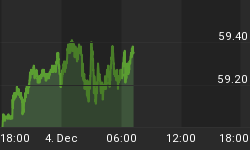The following is part of Pivotal Events that was published for our subscribers Thursday, March 5, 2009.
SIGNS OF THE TIMES:
Last Year:
"Traders Turn Gold Fever Into Fire"
"Gold fever is gripping investors, but the metal's temperature looks set to rise much further still."
- Financial Post, March 1, 2008
"The world is going through the biggest industrial revolution it has ever seen. The implications for raw materials are dramatic." High was 4.02 (LME) on March 6, 2008.
- Red Kite Metals - a hedge fund described as the "Kings of Copper"
- Financial Post, March 26, 2008* * * * *
This Year:
"The essential thesis is that we are adding 50 to 75 million consumers a year to the metals and the grains and the energy. That's going to continue."
- Donald Coxe, Financial Post, March 3, 2009
The demographic story was used to tout stocks in the 1920s, as well as at the secular high for the stock market in the late 1960s. Then, it was used to tout stocks in the 1999 tech-mania when a "baby boomer" was turning 50 every 50 seconds, or something like that. The reasoning was that they were going to buy stocks for their retirement plan.
At the time, Bob Prechter published a thorough study on demographics during the post-1929 contraction. The conclusion was clear - the depression turned down the birth rate, as markets pushed demographics.
Essentially, a key part of the late commodities mania was the concept of the global boom creating endless numbers of middle-class families in China and India. Commodities would respond to demographics. Quite likely, the crash in commodities, as in the 1930s will be forcing demographics, and the critical factor has been credit contraction, which in 2008 was not part of strategists' cheerleading.
STOCK MARKETS
Dismay is running its course. Our memo of February 2 was "concerned" about the immediate outlook, and recent work by Ross had a possible low for the S&P at 643. Monday was a failure of nerve day and so is today. So far, the low on the S&P is 682. By the same method the Dow equivalent is 6250.
Pressure seems close to finishing, which will set up the rebound. They rally will likely fit the parameters of the stair-step decline as outlined in two recent ChartWorks.
Some of the timing could be due to the big change in currencies that has been possible this week.
Our February 19 edition observed that Canadian and US banks were depressed enough to "pop a brief rally." Using the BKX, the low was 19.58 on that day and the initial move made it to 28 last Thursday. At 19 today, this seems to be a test that could resolve to the upside.
Overall, Democrats are using the crisis as the reason to impose socialist compulsions. And as we all know, socialists are like cats clawing the furniture. They can't help doing it, but always look guilty when caught. In every experiment in socialist meddling, the equivalent of wrecked furniture is always revealed by implacable market forces.
More accurately, Democrat policies should be described as corporatism or fascism, and it is time that socialism became as stigmatized as, for example, liberalism.
This will make a post-bubble contraction even worse than otherwise making the investment streets unsafe - day or night.
Any rallies we expect should be used only by nimble traders. Investors should consider them as a means of keeping track of the post-bubble contraction.
Credit Spreads: The advice in November-December was to position depressed corporate bonds for a rally possible out to around March-April.
With a gain of 14 points on a yield of 10 percent in December, the BBB showed an outstanding return. Our February 19 edition advised to begin selling when the yield was 8.93%, and the following week it was an outright "sell". The yield has increased to 9.35% and the spread has widened from 5.25% to 5.67%.
The next phase of the lengthy post-bubble bond disaster has likely started.
















